A game that’s on your side
Let’s imagine games as people.
We’d think of attributes - brash or quiet, strict or forgiving, quirky or dry, daring or safe etc…

As game designers - what traits do we want for our game?
Well, people tend to gravitate towards and , and . Makes sense, and there are plenty more on the list (1)
How about empathy?
In relationships, people (2) tend to value those who are thoughtful and make an effort to consider their point of view.
Let’s call it a game that’s “on your side”.
It could be reflected in the core design and UI, and also in various small and simple features that signal the game’s looking out for them.
Some nice examples -
In by Machine Zone, the free speedup option let’s players shortcut timers when they fall under a 5 minute threshold:

In by IGG, when you first run out of coins you’re given extra for free to keep playing:
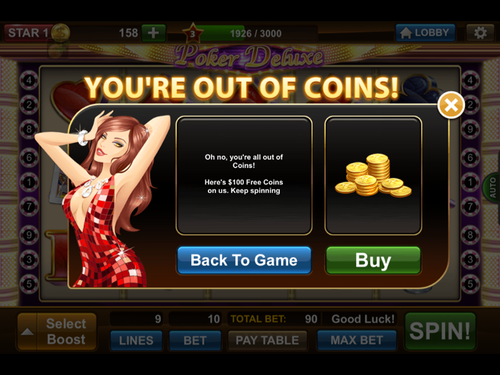
In Zynga’s , hero quests don’t consume the items they request, allowing you to sell them after:

The birthday gift in Supercell’s feels thoughtful and personal -
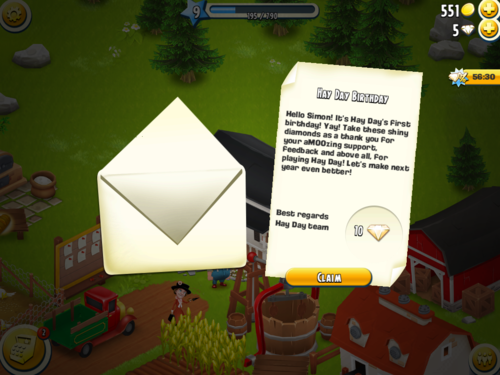
So are these games at their heart, altruistic?
Not at all (3). Let’s not forget they are still free to play games that do a great job of extracting revenue from paying users, as they should.
But they do a good job of signalling they care for the players, and in the process help build attraction and loyalty.
Notes
(1) beyond the universal ones, player taste and personality matters a lot
(2) this particularly applies to
(3) as any free player struggling with storage limits and ingredient production times in Castleville’s mid game would tell you
Other great examples? I’d love to hear - or .
Game Live Ops (slides from Casual Connect)
It was fun to talk about live operations, specifically time limited* content and mechanics, at this year’s .
I’ve uploaded my slides here, which cover:
- The different types of live ops
- Why game developers should care?
- Some industry examples, including one of our own
- Lessons learned
* new levels and missions etc also falls under the topic of live ops but the slides focussed in on time limited content.
The talk itself was only 20 minutes which was a shame as it’s a fascinating topic and lots of interesting things to go into (eg- pros and cons of different contest mechanics etc)
Any great examples of live ops out there? Share on or
Five highlights from E3

E3 was manic.
A whirlwind of next gen consoles and triple A titles.
This year I roamed the show floor trying out as many games as possible.
Most were bigger & badder takes on familiar genres.
on Xbox One was stunning. ’s animations flowed better than ever. had gunplay, underwater! Ubisoft’s pulled us into an immersive wired city. Oh and mechs are !
So what about non core games?
Not that many.
With a of most of the industry remains focussed on its male core gamer demographic.
There were bright spots though - 5 personal highlights:
1/ That Dragon, Cancer

Not so much a game as a thoughtful piece of art. The setting is a sad hospital room, the character a cancer patient and his thoughts. This had the most emotional impact, despite the lack of fancy graphics.
2/ Project Spark

Little Big Planet and Minecraft just had a love child…
This was the most awe inspiring demo at the event. Microsoft’s ambitious game creation is a joy to play with: the first time you swipe your finger and literally create worlds of ice and forests before your eyes takes your breath away.
3/ Octodad
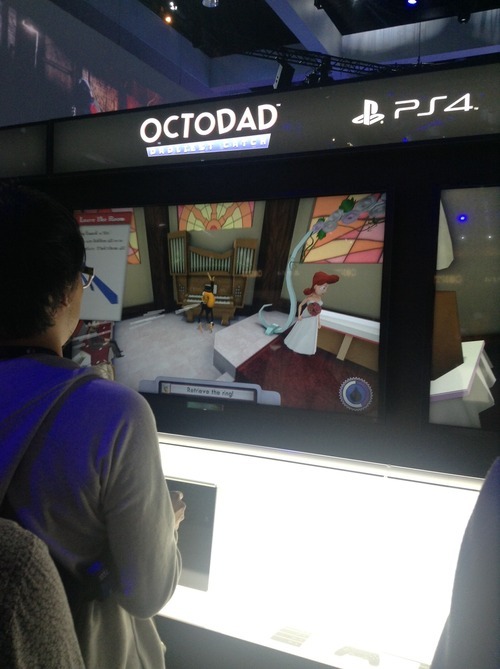
Octodad is so ridiculous in its premise it can’t help but bring out the smiles. Trying to control Octodad’s clumsy tentatcle to retrieve a wedding ring for your (female) bride is a farce, in a good way. The game bursts with personality and character, a welcome contrast to all the high speed action and violence in the rest of the PS4 zone.
4/ Contrast

This action leaves a dark impression. Contrast has intriguing female leads, gorgeous french noir art and a gameplay twist. When your character’s shadow is on a surface you can change modes and control your shadow in 2d, moving and jumping amongst other shadows. Whilst frustrating in its controls it pushes the boundaries in creative gameplay.
5/ My School
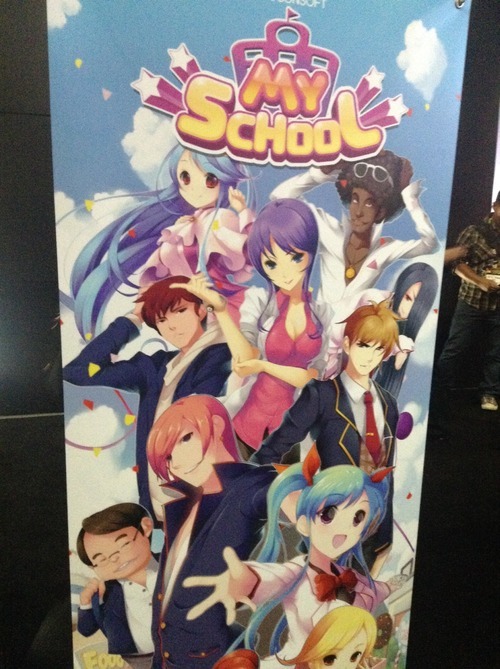
Not sure whether I’d call this a highlight or not, but worth a mention. This over the top school simulation game features plenty of “only in Asia” quirkiness (maybe fitting from a studio called Racoonsoft). Busty teachers, an overabundance of cola machines and confused students looking for work, this game had it. When I asked the goal of the game, I was told it was “to make money”.
Education these days :)
ps - special mention to - who knew 101 character multiplayer chaos could be so much fun…
What were your E3 highlights? or let me know on
5 reasons virtual worlds died

Edit: HN discussion on this post
Lately I’ve been designing a couple new games and got me thinking back to virtual worlds.
Remember when they were the next big thing?
Millions of us tried them. Gartner 80% of all net users would have Second Life avatars. VCs invested . Even Google a piece.
My startup too. launched the first browser 3d UGC world with cool tech we built on Unity. You could chat, create, shop and more.
But after a couple years we’d only gained 600k users so decided to pivot to mobile .
Here are 5 reasons why virtual worlds never took off and some ideas for how they can live on in new games:
- No purpose
Virtual worlds don’t have explicit goals.
No quests. No mechanics. No problems to solve. They aren’t games.
Give people a blank piece of paper and ask them to “have fun!” A few might get excited and start writing a poem or sketch a masterpiece. But most will be annoyed, grow bored and give up.
Same with virtual worlds.
-
No feedback
Turns out, humans really love feedback.
Our addictive behaviours are mostly shaped by tight stimuli and response schedules. We check Facebook often with the hope of new message or notifications. We eat junk food and are rewarded with an immediate dopamine hit.
Contrast that to virtual worlds where you might “work” for hours before getting feedback, which can only come from other players. Not very motivating.
- No theme
Most successful UGC communities have either a particular topic that glues them together, or easy ways to dive to them.
Reddit has subreddits. Pinterest has tags and categories. Youtube has search and recommendations.
Themes make it easy to consume, start and keep up conversations.
In virtual worlds there is no easy way to jump straight into the themes you like, and no structure that enforce adherence to them.
- Complexity
Great technology doesn’t mean a great user experience.
Virtual worlds offer great freedom, but also a LOT of complexity and ways to get stuck.
These days where the distractions abound, people don’t handle complexity well, especially when trying something for the first time.
-
Needs met elsewhere
Despite drawbacks, virtual worlds offered a couple of bright spots - online community and freedom to create.
But the spirit of these can also be met in other ways.
I can build a great farm in Hay Day or doodle in Draw Something 2, interacting with friends in simple but meaningful ways.
Minecraft offers great creativity and community with a small number of important mechanics.
On the deeper end, MMOs like Entropia have great freedom and incredibly loyal community.
So what’s new?
So for those of us creating mobile games, should we forget about virtual worlds?
I don’t think so. Whilst never living up to its hype*, we can continue to incorporate their positives in a deeper way.
First is to figure out how to tie greater creativity into our mechanics to broaden .
This can be really tricky - how do you “judge” creativity in a programmatic manner? Easier if it’s creativity to meet a certain functional goal (ala Bad Piggies), but is there a way to judge “beauty” or “artistic merit”? In our first game we built a system to judge a fashion outfit. Whilst sufficient I’d be first to admit there is a lot more nuance that could be added, though it’s not always easy to define and balance such a system.
If judging is community based how to you build systems to make it fair, tamper proof and not feel like work? And do it in a way that’s timely, and gets the core loop running quickly?
We could also do more to foster friendships between players that last years, not days. Ability to collaboratively work on shared projects is something extremely meaningful in virtual worlds. Guilds in some mobile strategy games let you coordinate attacks which is lots of fun, but haven’t seen much yet in the way of coop base building, or crafting etc.
We can offer a deeper level of customization, allowing you to tweak not only your look but your personality and how you engage in the game world. Chat and status messages are a start, but could you have ways to customise how your characters or army or base react programmatically under different circumstances (like scripting in SL but without the complexity).
Not all virtual world concepts translate well, and getting them working with a simple UX for a small screen is the challenge, but there are things we can learn from and adapt.
What’s your take? or let me know on
*Whilst not a mainstream success, virtual worlds are still active amongst several niche groups, eg deep roleplayers, virtual artists, or the disabled - where they can move, express and socialize in a way they can’t in real life.
Rise of the microsale

There’s an interesting trend bubbling up of extremely time limited offers in mobile games - let’s call them microsales.
In a microsale, there’s an offer - for example a deal on a virtual item, currency or content (eg- access to a special dungeon). This is presented with a very short countdown timer, typically 20 seconds or less.
The player is forced to make an explicit decision on the spot - take the offer now or let it pass with regret and uncertainty as to when or if it would return.
It’s an interesting entry in the monetization toolbox, and one that to me, makes sense:
A by Scott Swain, Richard Hanna and Lisa Abendroth (2006) examined 3 mechanisms (deal evaluations, anticipated regret, and urgency) that influence purchase intent, through the lens of time limited sales. They concluded:
…shorter time limits create a greater sense of urgency thereby leading to higher purchase intentions…giving consumers more time leads only to more delay and, in effect, the shorter time limit causes the promotion to gain priority on consumers’ “to do” lists. However, caution is needed since… too short of a time limit can also increase perceptions of inconvenience, leading to lower deal evaluations and ultimately lower purchase intent.
On mobile the “inconvenience” factor I think is reduced - you’re already in a “limited time” frame of mind, and all it takes is a single tap on a button to take up the offer - especially when using virtual currency, not needing the interruption of IAP password entry.
That out of the way, all you need is a sufficient time for the deal to be evaluated, which is normally in the period of seconds, not minutes.
Does that mean traditional 24 and 48 hour digital sales are on their way out? I doubt it, but I suspect that we’ll see a lot more of microsales used in parallel in the future.
Have you used or seen a microsale lately? Would love your feedback. or
Whither the wither mechanic?

In the first social game wave, two common mechanics were harvest (appointment) and its companion, wither (delay penalty).
Playing off the harvest, the wither helped reinforce the regular return cycles those games were designed around. How?
The fear of loss can be strong. The feeling that your precious crops would decay (or be ) was a strong motivation to log on that one last time before sleep or early morning before packing lunch for the kids.
Fast forward two years later, the wither mechanic seems to be falling out of favor.
This year’s most successful mobile farming sim, eschews it.

So do many others that have ranked in recent times. Even Zynga’s team at GDC talked about how they wanted to remove it, but were constrained due to other factors.
So why this trend? Some thoughts…
- Social players are already conditioned to return and harvest. In the inital social game wave there were millions of first time “gamers”. Early hits like Farmville trained them how to play, checking back regularly to collect and progress in bite size chunks.
- Other systems provide calls to action. With development of more mechanics for high grossing whales (eg events), there are other drivers for players to return. Zynga shared that 64% of players are prompted to return through platform reminders - a growing set of open graph stories, pictures, notifications and requests. An extra set just adds more complexity.
- Elder players are motivated by efficiency. For example, a deep crafting and request system provides strong drivers for players to be optimal in their return schedules to gain ever increasing rewards. This desire for increased payoff turns out to be a very strong retention motivator for experienced players.
- Wither unwieldily as a monetization driver. Some games allow you to rescue decayed crops (or revive near death puppies) for a cost. This can help as a time based monetization driver, but it’s hard to balance. eg- the amount of crops a player may have growing at any particular time could vary greatly. It’s also something part of the core loop, which can affect core satisfaction with the game, in the case you couldn’t log on last week due to, you know, real life. Instead, other approaches such as time limited events provide a simpler single monetization request (extend the easter egg hunt by 24 hours?). It’s also one that doesn’t punish you as part of the core loop, and instead gives you an chance to win something extra special, if you chose to.
-
Wither is a negative experience. Losing something isn’t pleasant. Especially when that thing may have taken plenty of time and effort to create. Punishment and its avoidance has a place in game design, but arguably not as your primary return driver. What are the options? A better way to handle that could be to remove it, or flip it around to be something positive.
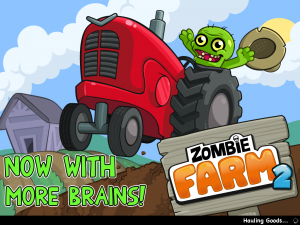
For example Zombie Farm by originally had a wither mechanic. However the sequel was changed to be an early bonus system - i.e. when you returned to Zombie Farm 2 on time you got a freshness bonus, but no matter if you returned a week or month later you never lost all your crops outright.
This type of system gives the player a warm feeling, one that the game is on your side.
Update - a great comment on the article by Nick Bhardwaj brought up Clash Of Clans having a subtle wither mechanic with troops, which need time to be produced but can be lost via PvP. Personally I’d describe this as a core PvP loop rather than wither - there is no way to securely “bank” your troops for use later (shield is something separate), and there is also no attacking done by the game itself, just other players. Fear of loss and the need to revenge are very strong drivers in all online battle games. His take was that Supercell encourages you to return and immediately “spend” your troops, which is more positive than the environment taking them away ie- its a more upbeat multiplayer twist on an established mechanic. Interesting discussion.
Does wither still have a place? Love your feedback: or
Pleasure, puzzles and chimpanzees

I took the train a few times last weekend, and on every trip I saw people playing both Candy Crush Saga and Puzzles & Dragons.
Both are very different in style and mechanics, but at their core they’re both puzzle games.
If we look beyond mobile, millions still play Sudoku, despite the “fad” being close to 10 years old. And countless millions more enjoy filling out the daily crossword puzzle (yes, newspapers still exist).
Why?
Studies have shown the release of dopamine associated with solving a puzzle - the aha moment - clearly there's pleasure in puzzles.
Humans only?
A fascinating new shows how ingrained into our evolutionary makeup this behaviour is.

Research by the Zoological Society of London using a game designed with dice, pipes and holes found that chimpanzees are motivated to complete puzzles even in the absence of external rewards.
“We noticed that the chimps were keen to complete the puzzle regardless of whether or not they received a food reward. This strongly suggests they get similar feelings of satisfaction to humans who often complete brain games for a feel-good rewar.”
- Fay Clark, ZSL researcher
The fun of solving puzzles appears to be wired deep.
Double the pleasure?
So does the pleasure come just on completion of the task? And does it only flow in one direction?
Other has shown the that being in a playful state can help solve puzzles more easily, and interestingly, anticipating solving a puzzle puts the brain into a more open and pleasurable state.
So in addition to the satisfaction of finding a solution to a difficult level in CCS, there is also the sweet anticipation as you start loading up the game and prepare to play.
What does it mean for game designers?
So does that mean we should drop our space battle, shooters or farm games and all switch to Match-3 puzzlers?
No, not really.
But some takeaways I’m thinking about:
- Games that align with human “brain wiring” are more likely to do well
- There’s more opportunity to meld puzzle games into other game genres to make them more addictive (this is an interesting one I’ll expand on in a later post)
- Puzzles can often lose the fun factor easily by being too easy or difficult - the researchers from ZSL could and did increase complexity by making pipes opaque and balance difficulty for the chimps. The trick is to be positioned between apathy (too easy*) and over frustration (see Mihály Csíkszentmihályi's on “flow”). Note - this state of energized focus is different from mindless repetition which can be associated with hypnotic states.
- To get people to do better in your puzzle game and enjoy it more, go for playful loading screens and audio to get them in the mood
- Animals are smarter than we think :)
What’s your take on puzzle games? I’d love to hear: or
Friends and Game Progress
Progress with friends
Count me as a fan of Candy Crush Saga on .

The folks at do a great job. Much fun is the over the top (and slightly creepy) presentation of a much-loved tile matching mechanic. But I also love the transition between levels on the Candyland map and being able to see my progress vs Facebook friends:

Woohoo level 10… see ya Mike…

Um… Charles, Angus, Sana and Mary, you guys have too much time on your hands *_*
Air’s thin up there
Seeing your Facebook friends* in a game can be a strong motivation to continue on the grind of a game.
* For many hardcore players who use dedicated Facebook game accounts with non irl friends, I think the argument still holds. You often have as strong a bond with them through other games spanning many years of your life
But it’s increasingly the case that:
- Your FB friends won’t won’t be all playing the the game you are
- Of those who are, only a couple might be at high levels
This presents a question to game designers who spend many cycles on high level systems and players, those who bring in the big revenue.
On one hand you could argue that the real friend social layer is only needed to get you addicted to the game and helping the viral coefficient a bit, and once you’re up there at high levels the meta game and game-specific social components (friends, guilds, challenges, events etc) take over.
But to me it seems strange to have two separate friend layers within a game - Facebook and in-game, often used in different parts of the UX and game systems.
A marathon model?
Imagine in a game like Candy Crush Saga if that instead of showing a ever thinning list of FB friends as you progress up through the levels, you blend in-game friends (and foes and strangers) into the progress map.
It could be done programmatically.
A sprinkling of high level players, with serious bling showing the spoils of progress, as well as those with a similar cohort, trajectory or level to yours, to encourage you to keep on moving (analogous to how Clash of Clans throws high level players occasionally into the random PvP matching as well as those ranked similarly in level to you)
The way I see it, this model could be like a marathon:

- You may have a handful of friends or people you know also running and motivating you to join, but they probably aren’t all running with you through the whole race
- You have the high level runners at the same event - the ones you admire on the big screens and in your dreams aspire to become one day
- But most of the time you are surrounded by folks running around you - some may be and remain total strangers, others you may develop an unspoken but real emotional camaraderie as you compete, but also drag each other to continue through the gruelling miles
All of these three groups are different, but aren’t they all runners in the same game?
Should FB and in-game be treated the same? I’d love your feedback. or .
Creating a game brand - 5 questions to ask
For a startup game company, does brand matter?
A while back I sought wisdom from a group of experienced tech entrepreneurs, all of whom had built successful companies:

That makes sense.
Why build a brand?
In an age of and cluttered app stores, having a strong brand for your portfolio is more important than ever.
Increased brand equity to increased customer lifetime values.
A strong brand will convert better in cross promotion and organic adoption of apps from the same company, offsetting rising CPAs to individual titles. A friend at a large mobile studio with many games, estimated the brand uplift factor to be over 20%.
And basic brand building doesn’t cost that much, making it startup friendly.
Yet why is branding is usually the last thing on our minds?
6 months ago I would have counted myself in the “product is the ONLY thing that matters” camp, yet now I’ve switched camps…

These may be great games, but would players know these are from the same company?

On the other hand, how could a player who enjoyed Tap Paradise Cove and loves cute animals NOT want to play Tap Pet Shop?
How to do it?
Ok, so it’s important, but for us engineers or designers, where to start?
Having gone through the process with , I found working through these 5 questions was very helpful:
- Who is the target player & market?
- What are your core brand attributes?
- What does your brand stand for? (emotional connection)
- What will identify your brand to players?
- What games and features strengthen the brand?
Let’s go through them one by one:
1. Who is the target player & market?
Yes, the easiest one! You’re making a game, you should have a primary audience in mind. eg-
- We’re making strategy games for high income males over the age of 25
- We’re making lifestyle games for adult women
- We’re making racing and sports games for boys up to the age of 14
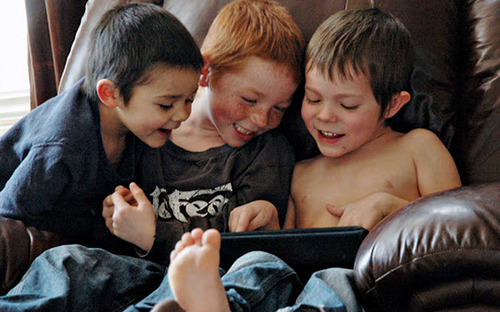
What if you believe you’re making the next Angry Birds, a game that will be popular with literally everyone?
Creating a game like this is difficult. While you might strike it lucky, your chances for success and monetization go up if you create games designed and branded for a target group of players. Even mega hits like Temple Run and Words with Friends have their primary markets (teens and adult women).
Defining player personas, who you’re building for, lets you really dig in and understand:
- Who are they?
- When do they play?
- What do they play on?
- What other media do they consume?
- What issues are important to them?
- What challenges do they have in their lives?
- etc
2. What are your core brand attributes?
If you had to pick (and you do!) what are the 2 or 3 things that are unique to your brand. Put another way, what makes you different from everyone else out there?
Let’s look at some examples from mainstream:

- Toms - style with a social conscience
- Nike - personal achievement
- Walmart - large selection and low prices

- Personal - games that relate to my life
- Playful - games that can laugh at themselves
- Inspirational - positive games that inspire me

Once you have gone through this and settled on your brand attributes, it’s like you’ve found your North Star. It will help guide you in decisions from here on out.
3. What does your brand stand for? (emotional connection)
The strongest brands form emotional connections with consumers that often override logic and reason.
Low cost rubber and fabric stitched in a factory in Indonesia can inspire people to “Just Do It”. People will queue for days for the latest iDevice. Overpriced headphones from Beats convey urban cool and freedom from authority:

It opened our eyes - when we A/B tested taglines for Me Girl, we found emotional phrases like our final choice “Fabulously Me” converted much better than impersonal choices like “Games with Style”.
“Fabulously Me” sums our mission: to make women feel fabulous while playing our games. Regardless of age, looks, body shape, status in life, challenges…everything.
This is what our brand stand for.
If a brand stands for something - Freedom. Challenging yourself etc., chances are players will care that much more in return.
4. What will identify your brand to players?
Once you’ve locked down your targets, brand attributes and emotional connection, it’s time to bring that to life visually.
Creating a match of logo, typography, color palette, audio, UI elements and animations in a cohesive experience that conveys your values is the goal. Honestly, it’s easier said than done (we have a ways to go) But we just consciously going through the process will often result in something good.
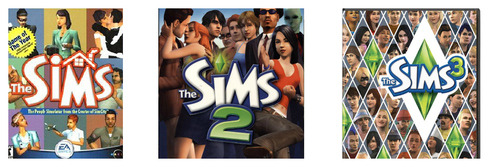
The venerable line and their “Play with Life” proposition does it extremely well, with consistent visual elements that a random 20-something on a street could identify in a second. And their music and audio right including their quirky Simlish reinforces a unique personality.
As we’ve seen with the Sims, branding elements that anticipate and can weave into future games, expansions and sequels is also important. Even more so in the age of mobile with more releases more often.
For us a future “Dance Me Girl” or “Me Girl Dancer” would fit nicely into the same family from a cross promotion perspective.

5. What games and features strengthen the brand?
Consistency is key - whether in art, storyline, mechanics, humour etc.
If decided to sell your personal info to shady direct marketers, how would you feel?

Likewise if you’re someone who enjoys Bubblez on and returned to find them pushing a hardcore dungeon raiding MMO, you’d probably be confused.
These are extreme examples of course, but there are plenty of choices that we all face every day:
- should I add a feature to simplify UI but reduce freedom in my simulation game?
- should the game be balanced to encourage free players or heavily favor paid users?
- what types of ads should I be showing in my freemium game?
- should I add a feature that lets you lose a lot of real money investment in PvP?
- what should my next game be?
- etc..
Knowing your brand values often helps in these questions - ringing an warning bell when you’re heading down a wrong path.
For example we could add competitive systems where you systematically tear down the reputation of others. Whilst “fun” from a game design perspective and helping short term numbers, it wouldn’t align with our “positive and inspirational” feel.
And on the flip side, carving out cycles to do brand building features that might not directly boost metrics but help players fall in love with your game brand can be worthwhile.
An ongoing endeavour
As we’re understanding, it’s not a one time activity - building a brand is an ongoing sustained effort that spans from game design, to engineering to marketing and even customer support.
Of course a great brand can’t rescue a bad game and it’s always a tough call to put precious cycles into something you haven’t before.
But assuming you are making good games, investing in brand building can add up to huge wins in the long term.
Any branding tips to share? I’d love to hear your feedback. or
Big thanks to our investor whose Mattel experience made us “see the light”!
Analysing a Top Grossing Game: Rage of Bahamut
Image for a minute, one of the U.S.’s Top Grossing iOS apps.
A freemium game that has stayed top of the charts for the last three months.
Like me, you might imagine a title with gorgeous HD graphics, slick UI and a lush soundtrack?
You’d be mistaken.
In fact, the first time you play by Japanese developer (published by ), you might think you’ve downloaded another app by accident.

The visuals? Mangalicious, but low def only.
The UI? A web port with text, links, buttons and banners on often long scrolling pages.
Audio? This game doesn’t have any. Really.
But that doesn’t hold it back.
Rage of Bahamut (RoB) is a triumph of game mechanics over glamour.
It’s million dollar proof that depth counts (that should make us game designers happy :)

Up at the top of the ranks since launch
Here’s my attempt on breaking down some of the key elements that make it such a monetization monster.
Mobile-Friendly Core Game Loop
First the bread and butter.
RoB is a collectible card game (CCG) with a very solid core game loop:
- Quest and battle (pve and pvp) using sets of cards, which have various attributes.
- This gives you resources: soft currency (rupies), items, treasures, cards and XP.
- In turn these give you the ability to increase your level, acquire and upgrade cards.
- Which lets you quest and battle vs more difficult opponents and get better rewards.
- Repeat.


It’s a simple to grasp concept that let’s players get right onto an addictive levelling grind in the pursuit of making progress.
Being a numbers heavy game (no actual combat or real time skill involved), there is plenty of depth for stats obsessed gamers to dive into.
By it’s nature it fits well for mobile gameplay.

The game:
- is easy to grasp and UI works well on a small phone screen
- has a vertical orientation makes it easy to play with one hand
- can be played in small snippets - actions don’t take long (eg battle in <30 secs)
- can be resumed with minimal real time elements (eg- change trains, go in a lift)
It’s a foundation that sets it up solidly for all the monetization* elements we’ll go into next.
* RoB also has a bunch of well executed retention and viral features (can I interest you in my referral code?) but that’s out of scope for this post.
IAP removed time restrictions
Ok, like all modern social games, RoB restricts how long you can play in a session, a limit that can be removed via IAP:

This is implemented through two main mechanisms - Stamina (used for progressing in pve quests) and Attack Power (used for pve boss battles and in pvp).
Both are consumed through actions, and regenerate at a rate of 1 per minute.
Both can also be refilled through hard currency (rage medal) acquired consumables: “cure water” and “holy power” respectively.
This basic mechanism motivates players to spend to reduce waiting times, and helps pace the game for free users.
Gacha and collection mechanics
Next, the gacha.
There are several types and many hundreds of cards in RoB, each with different attributes and maturation and evolution states.
All active players have a drive to gain better cards be it through gameplay, trading or card pack purchas - a key monetization driver.
Players can purchase card packs in the prominent position on the right of the UI header bar:

A card pack (there are several kinds) contains a set number of random cards, and there is always the small chance to get rarer (more powerful) items.
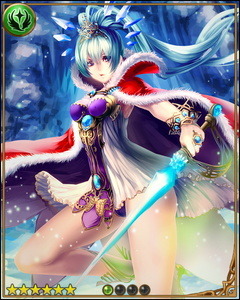
For example, there is a small chance that an SS Rare card like the Crystal Queen above may drop in a beginner legend card pack. There are at least 8 levels of rarity in the game (including normal).
And even if poor cards are received, they can at least be sacrificed to help upgrade other cards, reducing the psychological sting of drawing a bad set (more on that later).
All up it’s a solid casino mechanic that plays on the notion that you might well “strike it rich” in your next Card Pack. And it doesn’t hurt that Card Packs cost quite a lot of real money.
On a related note there are also collection drivers within the game, with bonuses awarded in case of a set completion.
One example -
In questing and pvp (you can target specific items from opponents) there is the chance to obtain an item from one of the treasure sets, which when complete give you a completion reward. This also carries over to events, where set completion unlocks bonus items.

Collecting of cards is also popular, as a result of the next topic…
Deep upgrading system
RoB includes a couple of systems, commonly used in conjunction that encourage you to source and consume cards to help make other cards incrementally stronger.
This has the net effect of encouraging more gameplay and monetization sinked through the card upgrade system, that plays into the desire to make good cards “that much better”.
The first- enhancing is a way to upgrade a cards level and battle stats (attack and defence) by sacrificing other cards, called feeders.
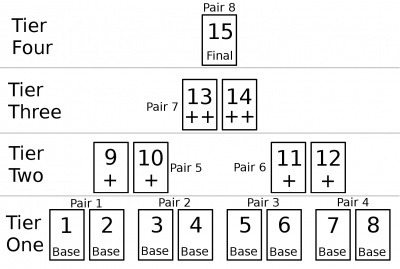
The second- evolving is a way to combine two cards of the same type to a more powerful version of the card - there are normally 4 evolution levels, and at the final level the cards rarity also goes up one level. The 4 levels are represented visually by different graphic versions of the same character, as in this Archangel example:

Like an an RPGs recipe and crafting system, these systems can be used in a variety of interesting combinations, yielding different results.
The systems also operate on a “law of diminishing returns”.
Cards have maximum rating, and increases towards a maximum require a greatly increasing amount of resources.
A maximum card evolution with only a few enhancements might deliver close to 98% of maximum, but to squeeze the last couple of percent up to 100% could take an enhancement investment of 15 (ie all cards enhanced in the evolution process).
Perfect for perfectionists :)
An analogy might be world class athletes, competing and training more and using increasingly advanced technology to shave off ever decreasing milliseconds off world records.
This makes it an awesome sink especially for its target audience, and combined with PvP participants competitive natures a strong monetization driver.
Well executed tutorial
Despite cheesy lines and endless tapping, the tutorial is strangely endearing, and more importantly introduces the player early to the key monetization systems - gacha, card packs, card upgrade and PvP, via a simulation with the guide npc.

Also subtle, the realm choice at the start of the tutorial uses your personal preference to drive the first sense of alliance and community. I’d say it represents the first emotional investment in the game, and players are generally more receptive to pay if they are hooked in emotionally.
PvP - revenge, proactive revenge and competitive spirit
Like other top grossing games (think Kingdoms of Camelot or Backyard Monsters), PvP goes deep and is a key part of RoB’s success.
Players can battle each other (your attack strength vs their defence strength modulated by various skills/effects) and by winning, gain among other things, currency (a percent of the losers liquid amount up to a certain value) and treasure.
Whilst there is some protection mechanisms so that lower level players don’t get beaten down by much higher level players, beyond that you have the chance to attack and be attacked, with impact.
This encourages players to spend to money to increase their attack and defence scores.

PvP can also get personal - there is a strong human reaction (dust off the evolutionary psychology theory) to a loss inflicted by another, even more than a positive emotional impact gaining something. Rivalry and in the evolutionary context, putting a wayward tribe member back in place I believe motivates even more monetary investment.
Feeding from that fear of loss, the game also lets you buy insurance (proactive revenge) for your treasure items (currency can be indirectly protected in other ways). The game lets you buy a magic circle to place on your treasure items. A magic circle fires once when that item is targeted by another player, automatically inflicting a loss on them.
Beyond the direct PvP battle system there is also a meta game available for players over level 10 (where some of the deeper monetization systems kick in), with a leaderboard of battle rankings, compiled using another attribute gained in proactive and defensive PvP. This is used to determine the best players during that time period, and based on their placement they are granted another currency, gems, that can be then redeemed for items and even more powerful cards.
Battle leaderboards are reset regularly, encouraging ongoing level of competition and investment in the game.
Guilds and guild PvP
Continuing on the PvP theme, one area RoB has done particularly well is their implementations of guilds, or in their terminology, “Orders”.
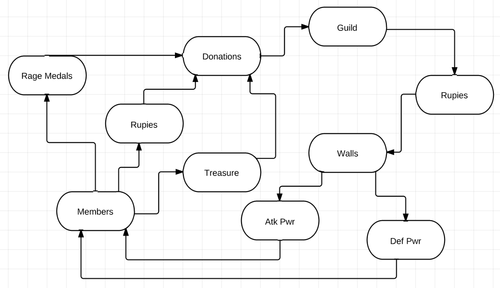
Only available to more established players (level requirement), orders let players join and then ultimately form their own groups, complete with leadership, roles and hierarchy.
Orders enable encourage investment in a group via a donations mechanism, and the leadership can also construct speciality walls and buildings that confer attribute bonuses to all members.
For example, a church constructed by an order can boost all God realm cards attack and defence by 5%, for a cost of 3 million Rupies.

Like players and their cards, orders themselves can be leveled up through group donations which has the impact of increasing the maximum number of members up beyond 30, which is useful in guild PvP.
Guild PvP is implemented through a “Holy War” system, whereby an order declares war during a set time period, and is matched automatically with another order (I didn’t figure out that algorithm), triggering a time limited event where order members battle each other, with resulting rankings (tabulated by a guild PvP specific attribute, Holy War Points) that ultimately translate into more cards.
The guild structure and guild PvP system in RoB have several benefits to monetization:
- A loop of helping a guild which helps the player which helps the guild etc
- Guild events and structures give a reason to spend to help the team performance
- Guilds communication tools eg forums facilitate economic activities like trading
- Guild leadership roles encourage more investment by those members
- Encourages patronage relationships where senior members desire to help others
- And of course a strong social bond (shared struggle, shared rewards) that encourages higher ongoing retention
Note - In addition to the order guild system, there is also a personal group system (everyone gets a guild!) called Fellows. I won’t go into that in this post as I understand it as more of a viral/sticky tool rather than directly monetization related, but indirectly helps monetization through mechanics where fellows leader cards can assist in certain attacks. ie- we upgrade and can help each other in a reciprocal manner.
Ongoing events
Events are key - keeping the game evergreen and encourage returning play and introducing new goals to drive towards.

In a recent event, players were encouraged to stop evil entities from using magic moon tears
In addition to guild PvP events (Holy Wars) there are also PvE events that encourage team work, and encourage purchase towards event specific cards which help in the specific event they appear in.
The loop is obvious and direct but appears to works, especially when caught up in the thrill of the shared event (would be interesting to see if an indirect system would have fared better)
Events also tie in with normal grind mechanics (eg quest system) but with typically additional random effects that let players participate for longer. This also ties in with a gacha mechanic whereby random rewards are assigned at random times.
Whilst a lot of work to implement and manage (there was a community uproar over technical issues in a recent event) the monetization impact particularly to dedicated paying users looks strong.
Item trading and economy
Last but not least RoB features a robust trading system and with it a simple but effective economy with de-facto item exchange rates (eg- to consumable items). Players can freely trade currency, cards and items with their friends.

As player activity “generates value” through upgrades and random drops through extended gameplay, that value can be transferred between players. Psychologically this can mean investment in upgrades, grinding and collection is “worth it”.
This also adds another dimension to the gameplay, allowing players to participate in a (often as satisfying) meta game of trading, profiting from sales as well as purchasing desired items directly.
Whilst in theory trading might be seen to reduce high end paying user monetization as it gives an option to purchase from another player (who in theory may have been farming for free) rather than directly from the game, converting free time into paid value, in reality it plays well with the random drop and upgrade nature of the game, encouraging more collection and investment in the game in general.
Summary
I believe Rage of Bahamut succeeds because of its excellent game design and deep systems that directly and indirectly drive monetization.
Put simply there are many different reasons and ways to spend your money.
It’s a great match to a high paying demographic and is implemented in a way that is mobile friendly and of course, fun :)
ps - wrote this post for personal interest to understand about monetization in CCGs, an old genre that’s new to me (grew up with D&D, not Pokemon!)
Thanks to Adriaan and other players for helping me understand the game better and also big ups to the RoB Wiki.
I’d love to hear your feedback. What did you think of the game? or
